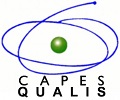End‒time experience and literature as a museum
DOI:
https://doi.org/10.14409/eltaco.2023.18.e0122Keywords:
nature and history, landscape, museum, Virginia Woolf, Cécile WajsbrotAbstract
The research of literary imagery, marginal or of unverifiable existence in formal painting before the early 20th century, reveals a landscape motif which, while defying the discourse of traditional art history as well as the aesthetic categories that governed the emergence and evolution of the genre, also renews the classical repertoire of the loci horridi. It is of particular concern here to focus on the issues at stake in this new «form of art literatura» (Didi‒Huberman, 2013:23) associated to the conception of imaginary museums where the history of images merges with the history of a nature that has long ceased to be the undisturbed environment in which the history of humankind unfolds in increasingly precarious circumstances.
References
Aloi, G. (2022). The Invention of Nature: The Art of Natural History. Laurence King Publishing.
Benjamin, W. (2012). El origen del Trauerspiel alemán. Abada. Traducción de Alfredo Brotons Muñoz.
Bertrand, R. (2019). Le Détail du monde. L’art perdu de la description de la nature. du Seuil.
Bonnefoy, Y. (2015). Les planches courbes. Gallimard.
Brown, D. (2009). Geological Time and Human Transience. En Dyce's, W., Pegwell Bay, Kent: A Recollection of October 5th 1858 (pp. 123‒130). University of Bucarest Review: A Journal of Literary & Cultural Studies. XI.
Corbin, A. (1990). Le Territoire du vide. L'Occident et le désir du rivage. Flammarion.
DaCosta Kaufmann, Th. (1978). Remarks on the Collections of Rudolf II: The Kunstkammer as a Form of Representation. Art Journal, 38(1), 22–28
DaCosta Kaufmann, Th. (2009). Arcimboldo. Visual Jokes, Natural History, and Still‒Life Painting. The University of Chicago Press.
Didi‒Huberman, G. (2013). L’Album de l’art à l’époque du «Musée imaginaire». Hazan/Musée du Louvre.
French, R. (2005). Ancient Natural History. Histories of Nature. Routledge.
Galí, N. (1999). Poesía silenciosa, pintura que habla. El Acantilado.
García Berrio, A. y Hernández Fernández, T. (1998). Ut poesis pictura. Poética del arte visual. Tecnos.
Giacomoni, P. (2007). Locus amoenus and locus horridus in the contemporary debate on landscape. En Schmeling, M. y Schmitz‒Emans, M. (Eds.), Der Paradigma Der Landschaft in Moderne und Postmoderne (pp. 83‒92). Köningshausen & Neumann.
Goux, J.P. (1989). Les Jardins de Morgante. Actes Sud.
Guyaux, A. y Védrine, H. (Eds.) (1999). Autour Des Épaves de Charles Baudelaire. Pandora.
Freedberg, D. (2002). The Eye of the Lynx. Galileo, his friends, and the beginnings of modern natural history. The University of Chicago Press.
Howard W. (1909). Ut pictura poesis. PMLA, 24(1), 40‒123.
Impey, O. y MacGregor, A. (Eds.) (1985). The Origins of Museums: The Cabinet of Curiosities in Sixteenth and Seventeenth‒Century Europe. Oxford University Press.
Lacoue-Labarthe, Ph. y Nancy, J.‒L. (Eds.) (2012). Fragmentos de Athenaeum. En El absoluto literario. Teoría de la literatura del romanticismo alemán (pp. 132‒133). Eterna Cadencia. Traducción de González, C. y Carugati, L.
Lee, R.W. (1998). Ut Pictura Poesis. Humanisme & Théorie de la Peinture. XVe‒XVIIIe siècles. Macula.
Le Scanff, Y. (2007). Du lieu d’horreur au paysage terrible. En Le Paysage romantique et l’expérience du sublime (pp. 6‒20). Champ Vallon.
López‒Labourdette, A. y Wagner, V. (Eds.) (2023). Gestiones estético‒políticas de los residuos. Lingkua.
Mabey, R. (2010). Weeds: In Defense of Nature's Most Unloved Plants. Harper Collins.
Marin, L. (1978). Estudios semiológicos. (La lectura de la imagen). Comunicación.
Malraux, A. (2015). Le Musée imaginaire. Gallimard.
Nicolson, N. y J. Trautmann (Eds.) (1976). The Letters of Virginia Woolf. 1912‒1922. Vol. 2. Harcourt Brace Jovanovich.
Olmi, G. (1980‒1981). Figurare e descrivere. Note sull'illustrazione naturalistica cinquecentesca. Acta Medicae Historiae Patavina, (24), 99‒120.
Plinio (1987). Textos de historia del arte. Madrid.
Rivallain, J. (2011). Cabinets de curiosité, aux origines des musées. OutreMers. Revue d'histoire, (332/333), 17‒35.
Rohelens, N.; Plesch, V.; Mac Leod, C. y Erchadi, A. (Eds.). (2023). Water and Sea in Word and Image / L'Eau et la mer dans les textes et les images. Brill
Schnapper, A. (2012). Le Géant, la licorne et la tulipe. Les cabinets de curiosités en France au XVIIIe siècle. Flammarion.
Schwartz, L. (2007). The Emergence of Memory: Conversations with W. G. Sebald. Seven Stories Press.
Thiebault, G. (2004). Bernardin de Saint‒Pierre: l'œil et le déchiffrement du monde. Cahiers Jungiens de Psychanalyse. 3(111), 31–38.
Védrine, H. (2002). De l'Encre dans l'acide. L’œuvre gravée de Félicien Rops et la littérature de la Décadence. Honoré Champion.
Wajsbrot, C. (2021). Nevermore. Le Bruit du temps.
Woolf, V. (2012). Pasa el tiempo. En Al faro (pp. 143‒165). Losada. Traducción de Ingberg, P.
Yoshimura, K. (2009). Félicien Rops artiste baudelairien. L’Année Baudelaire, (13/14), 247–267.
Filmografía
Geyrhalter, N. (Dir.) (2016). Homo Sapiens [película]. NG Filmproduktion.





















